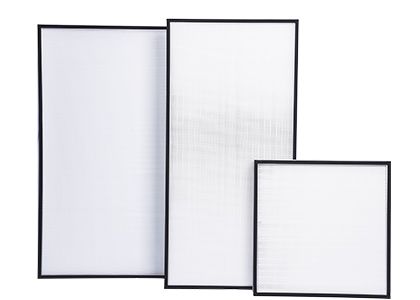
The resistance of HEPA filters is called "initial resistance," and the resistance value corresponding to the filter being scrapped is called "final resistance." When designing, a representative resistance value is often needed to calculate the design air volume of the system, and this resistance value is called "design resistance," with the common method being to take the average of the initial resistance and final resistance. The selection of the final resistance directly affects the service life of HEPA filters, the range of system air volume changes, and system energy consumption. In general, the selection of the final resistance is the responsibility of the HVAC engineering designer. Experienced engineers can change the original design final resistance value based on site conditions. Sometimes engineers forget to inform users of the selected final resistance value; sometimes users may switch to other models of HEPA filters or suppliers. In this case, the on-site engineer has to determine the final resistance value by themselves. Typically, the final resistance of the on-site HEPA filter is 2 to 4 times the initial resistance.
The longer a HEPA filter is used, the dirtier it gets, and the resistance increases faster. A high final resistance value does not necessarily mean that the service life of the HEPA filter will be extended, but it will cause a sharp decrease in the air volume of the HVAC system. Therefore, it is not necessary to set the final resistance value too high. Some test standards specify that the test should be terminated when the resistance is twice or higher than the initial resistance, but this provision has little relevance to actual operating conditions. Inefficient primary filters often use coarse fiber filter materials with a diameter of ≥10μm. Due to the large gaps between fibers, excessively high resistance may blow the accumulated dust on the filter, resulting in the resistance no longer increasing but the filtration efficiency dropping to zero. Therefore, the final resistance value of filters below G4 should be strictly limited. Achieving the final resistance of HEPA filters may mean immediate replacement or planning to replace the filters tomorrow, next week, or next month. How users perceive final resistance depends on specific on-site regulations and the experience of the operator.
The difference in resistance of various HEPA filters will affect air volume balance and airflow uniformity. During installation, individual air filters with excessively high or low resistance should be removed, and air filters with similar resistance should be placed in the same room. Air filters with different resistances in the same room should also be evenly distributed. For air filters on the same supply surface in a unidirectional clean room, the requirement for resistance difference is more important. According to the "Clean Room Construction and Acceptance Criteria," it should meet the following relationship:
The actual resistance value of each unit (under rated air volume) = (0.95-1.05) * average actual resistance of each unit on the supply surface
During use, a resistance monitoring device should be installed for each filter segment. The final resistance should be determined by instruments, not just the operator's intuition. Inexpensive resistance monitoring devices include U-tube manometers. Inclined tube manometers are more aesthetically pleasing and have higher accuracy. Pointer-type differential pressure gauges have higher grades and prices. Differential pressure transmitters can convert resistance into current or voltage signals, which are then transmitted to the control system. In addition to readable resistance monitoring devices, a final resistance alarm device should also be added. An easy way is to mark a red line on the manometer, and a safe method is to use a differential pressure switch.